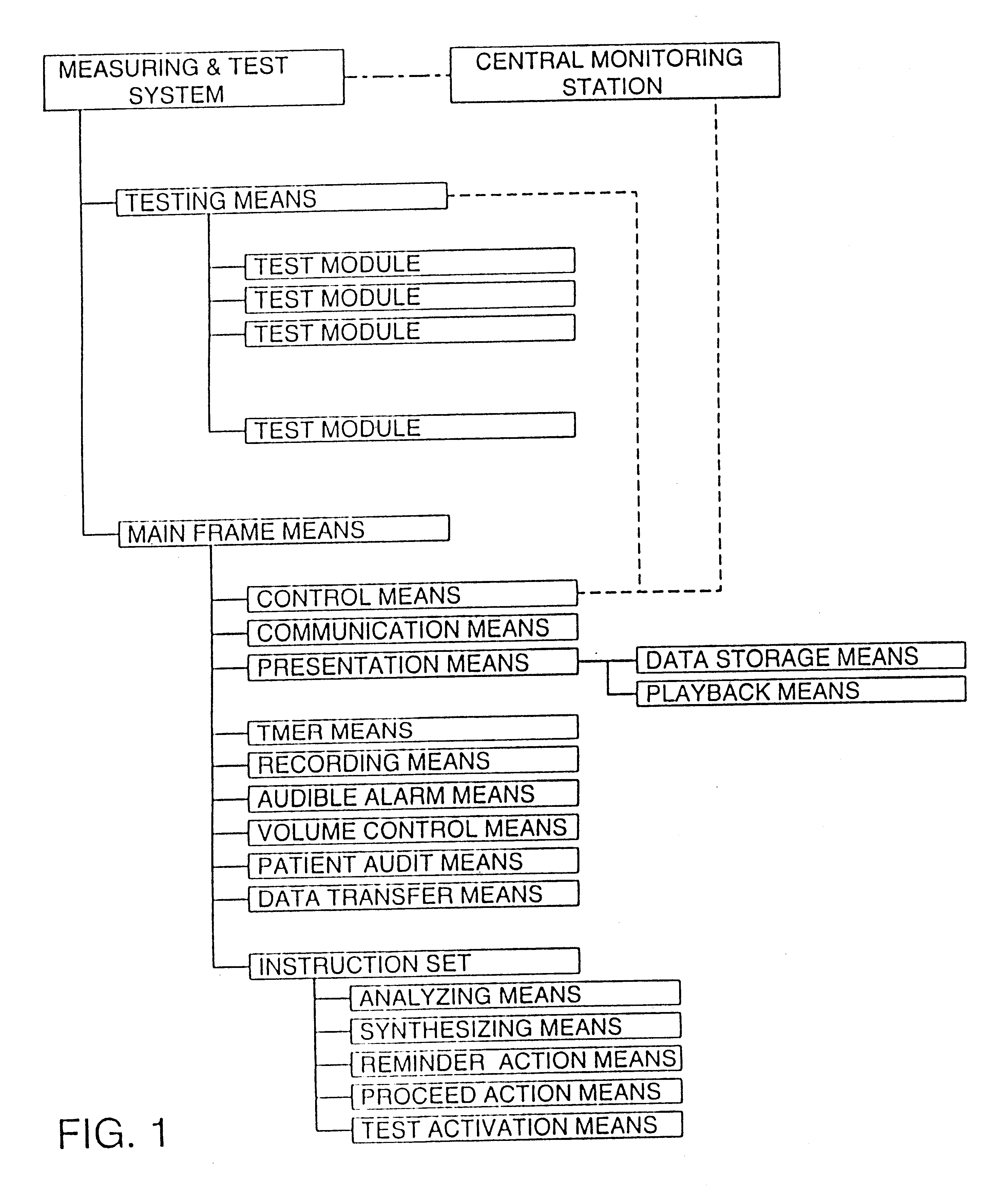Remote health monitoring system
a remote monitoring and health monitoring technology, applied in the field of health care, can solve the problems of high admission rate, inadequate follow-up, and general over-reach of care offered by frequent clinic visits at a fraction of the cost, and achieve the effect of convenient collection of physiological parameters and easy attachment and removal
- Summary
- Abstract
- Description
- Claims
- Application Information
AI Technical Summary
Benefits of technology
Problems solved by technology
Method used
Image
Examples
Embodiment Construction
The above described drawing figures illustrate the invention, a measuring and testing system for automated administration of medical care to a patient, including communicating with a remote central monitoring station. FIG. 1 provides an overview of this system showing the relationship between the various elements, including mechanical, signal and control relationships. The measuring and testing system comprises a testing means and a main frame means as described further herein. The testing means is preferably a plurality of test modules, each of the modules enabling at least one medical procedure. The testing means therefore is able to be custom configured for each particular patient. The main frame means provides mechanical support to the testing means and further provides a programmable control means such as a microcomputer, electrically interconnected with the testing means for control thereof, a communication means such as a modem for enabling data transfer between the control m...
PUM
 Login to View More
Login to View More Abstract
Description
Claims
Application Information
 Login to View More
Login to View More - R&D
- Intellectual Property
- Life Sciences
- Materials
- Tech Scout
- Unparalleled Data Quality
- Higher Quality Content
- 60% Fewer Hallucinations
Browse by: Latest US Patents, China's latest patents, Technical Efficacy Thesaurus, Application Domain, Technology Topic, Popular Technical Reports.
© 2025 PatSnap. All rights reserved.Legal|Privacy policy|Modern Slavery Act Transparency Statement|Sitemap|About US| Contact US: help@patsnap.com


